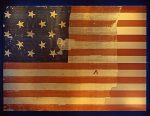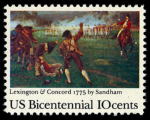(Explore the history and landscape of the United States with us as we approach the 250th anniversary of the American Revolution and American Independence. Get out your homeschool atlas and almanac and follow along!)
South Carolina is our homeschool state-of-the-week, so why not spend a few minutes today with your students learning about one of South Carolina’s most important historic places: Fort Sumter and Fort Moultrie National Historical Park, which commemorates the starting point of the American Civil War.
![[Homeschool American Heritage]](https://upload.wikimedia.org/wikipedia/commons/0/00/FortSumter2009.jpg)
“Two forts stand at the entrance of Charleston Harbor. Patriots inside a palmetto log fort, later named Fort Moultrie, defeated the Royal Navy in 1776. As Charleston blazed a path towards secession to preserve slavery, construction on a new fort, Fort Sumter, proceeded. The Confederacy fired on the US garrison of Fort Sumter on April 12, 1861 opening the Civil War, which redefined American freedom.”
Since the American Revolution, Americans have built systems of forts at harbors along the coast to strengthen maritime defenses. Following the War of 1812, several major weaknesses in the American coastal defense system were identified. To fill these voids, Congress and the US Army Corps of Engineers planned the construction of around 200 fortifications, primarily located along the Atlantic and Gulf coasts from Maine to Louisiana. Over 40 fortifications were built before construction halted with the outbreak of the American Civil War. These forts are collectively known as the Third System of Seacoast Defense.
Charleston Harbor made the list of sites vulnerable to attack, prompting the construction of Fort Sumter. Construction on the man-made island began in 1829. Thirty-one years later, sectional tensions exploded at Fort Sumter into armed conflict. (nps.gov)
You can find a wealth of additional information about the park’s history, landscape, location(s), and visitor facilities on the Fort Sumter and Fort Moultrie National Historical Park website from the National Park Service, and also on the Fort Sumter and Fort Moultrie pages on Wikipedia.
![[Homeschool American Heritage]](https://upload.wikimedia.org/wikipedia/commons/thumb/7/7b/Fort_Moultrie_National_Monument.JPG/1024px-Fort_Moultrie_National_Monument.JPG)
Explore America’s National Parks, National Historical Parks, National Historic Sites, National Monuments, and more via Wikipedia and via the U.S. National Park Service’s website today.
What historical American treasures are you and your students exploring in your homeschool this Cygnus Term? 🇺🇸
❡ The great globe itself: This is one of our regular Homeschool Geography posts featuring important natural and historical sites in the United States. Print your own copy of our River Houses American Heritage Calendar and follow along with us, and add your name to our weekly mailing list to get great homeschool teaching ideas delivered right to your mailbox all through the year. 🌎
❡ We set to-day a votive stone: If you want a great long-term history and geography project for your homeschool, explore the Historical Marker Database online (hmdb.org) and make a plan to find all the markers that are listed in your local area. Add any new ones you know of that are missing, and add new photos or descriptions for the ones already included. Your students will gain a better appreciation for your local community and will learn a wealth of new information about history and geography. 🏛
❡ Print this little lesson: Down at the bottom of this post you’ll find a special “Print” button that will let you create a neat and easy-to-read copy of this little lesson, and it will even let you edit and delete sections you don’t want or need (such as individual images or footnotes). Give it a try today! 🖨
❡ Books in the running brooks: You can always turn to your River Houses atlas and almanac for more information about any of our homeschool states-of-the-week. The almanac has detailed profiles of all the U.S. states and territories, and the endpapers of the atlas are indexes that will show you where all of the individual national and regional maps may be found. 📚
❡ Homeschool calendars: We have a whole collection of free, printable, educational homeschool calendars and planners available on our main River Houses calendar page. They will help you create a light and easy structure for your homeschool year. Give them a try today! 🗓
❡ Support our work: If you enjoy our educational materials, please support us by starting your regular Amazon shopping from our very own homeschool teaching supplies page. When you click through from our page, any purchase you make earns us a small commission at no extra cost to you. Thank you for helping us to keep going and growing! 🛒
❡ Join us! The aim of the River Houses project is to create a network of friendly local homeschool support groups — local chapters that we call “Houses.” Our first at-large chapter, Headwaters House, is now forming and is open to homeschoolers everywhere. Find out how to become one of our founding members on the Headwaters House membership page. 🏡




